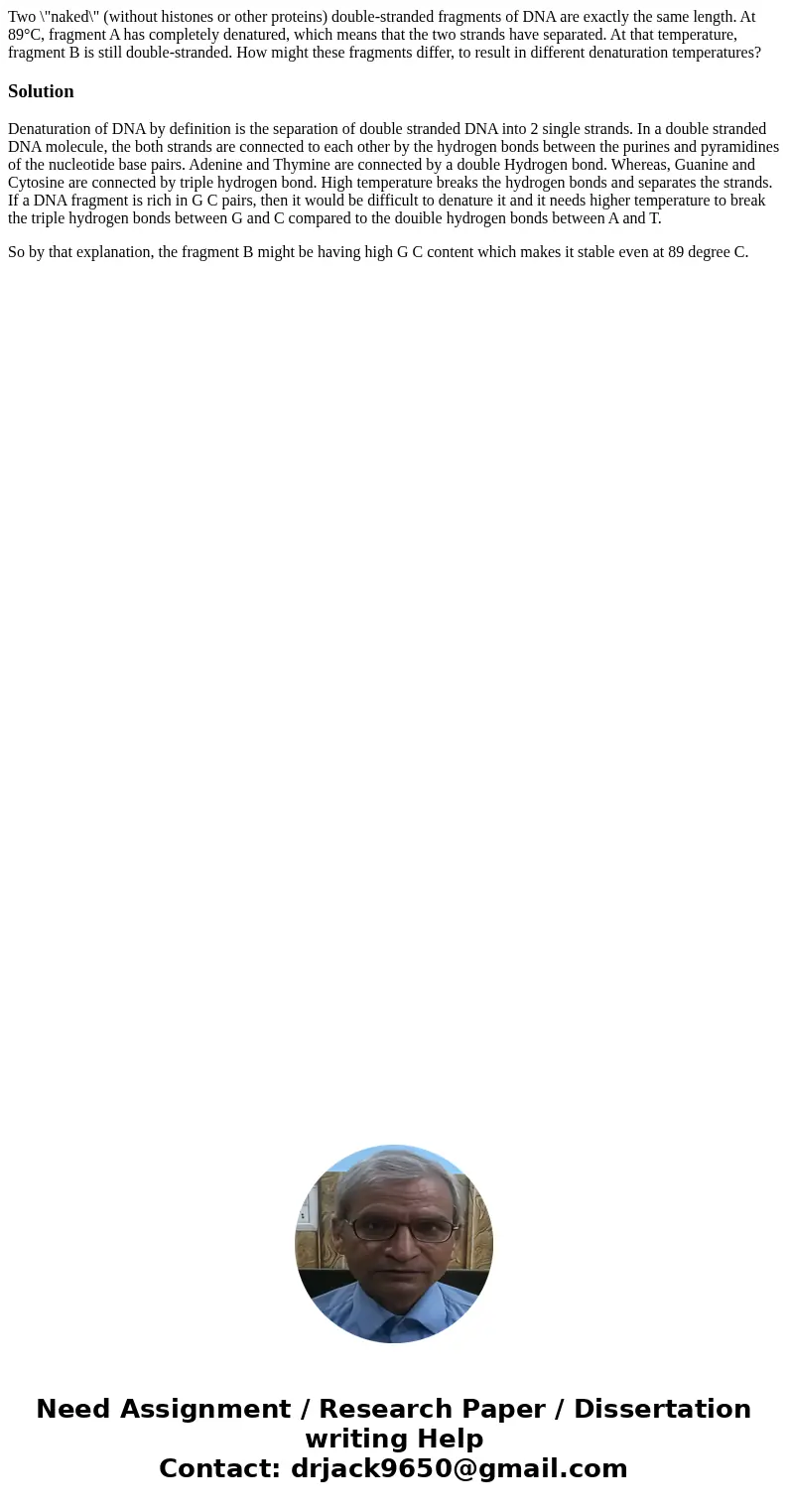Two naked without histones or other proteins doublestranded
Two \"naked\" (without histones or other proteins) double-stranded fragments of DNA are exactly the same length. At 89°C, fragment A has completely denatured, which means that the two strands have separated. At that temperature, fragment B is still double-stranded. How might these fragments differ, to result in different denaturation temperatures?
Solution
Denaturation of DNA by definition is the separation of double stranded DNA into 2 single strands. In a double stranded DNA molecule, the both strands are connected to each other by the hydrogen bonds between the purines and pyramidines of the nucleotide base pairs. Adenine and Thymine are connected by a double Hydrogen bond. Whereas, Guanine and Cytosine are connected by triple hydrogen bond. High temperature breaks the hydrogen bonds and separates the strands. If a DNA fragment is rich in G C pairs, then it would be difficult to denature it and it needs higher temperature to break the triple hydrogen bonds between G and C compared to the douible hydrogen bonds between A and T.
So by that explanation, the fragment B might be having high G C content which makes it stable even at 89 degree C.

 Homework Sourse
Homework Sourse